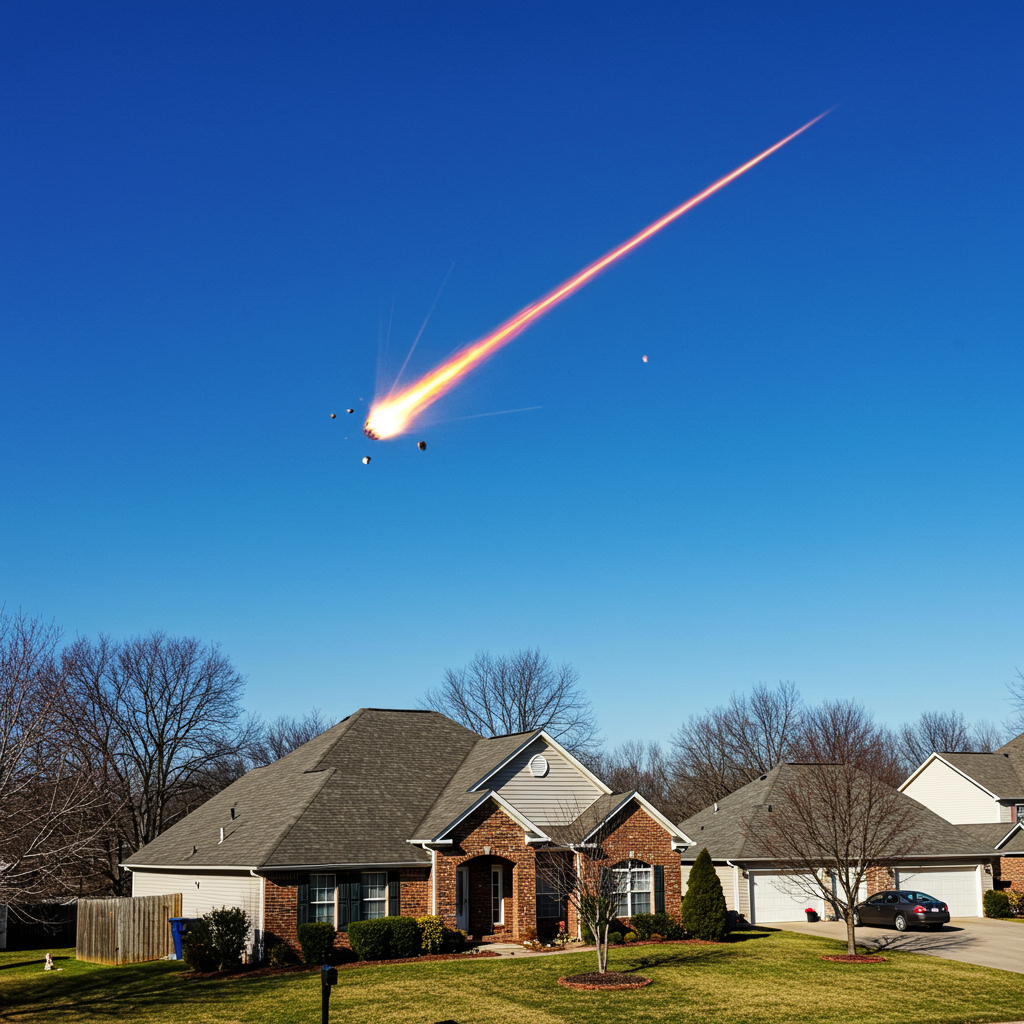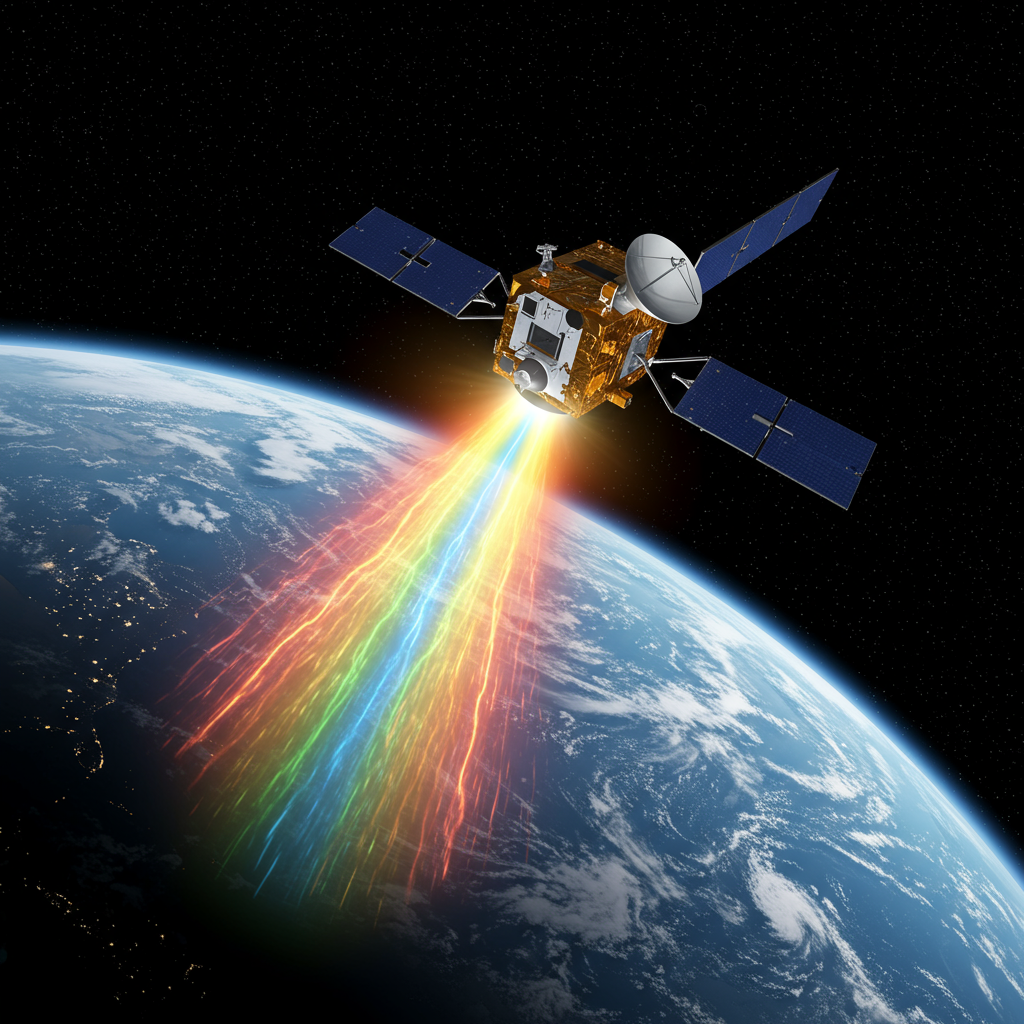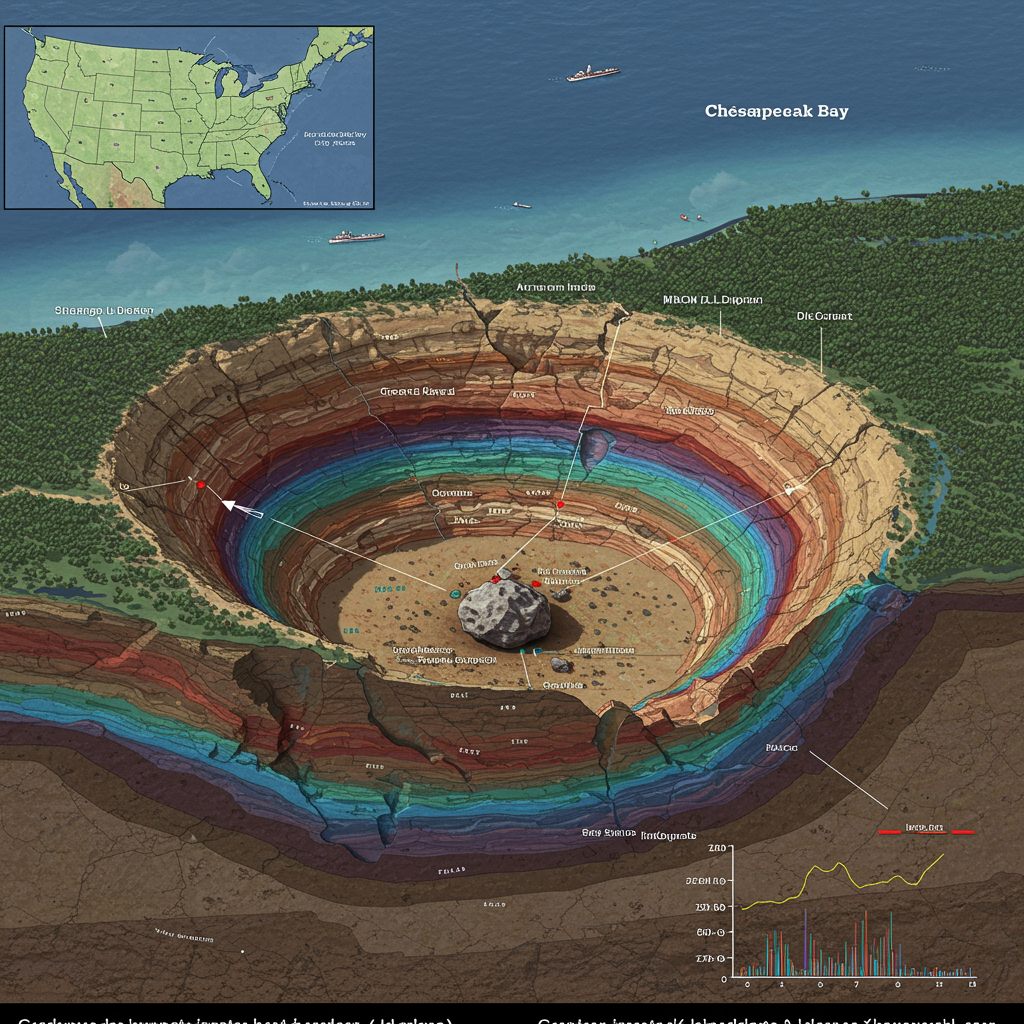A rare and brilliant daytime fireball recently blazed across the skies of the southeastern United States, creating a stunning spectacle visible even from space. This extraordinary cosmic event quickly turned into a local mystery as reports emerged suggesting a potential fragment of the meteor may have survived its fiery descent, possibly striking a home in georgia. The incident has captured public attention and sparked scientific interest, highlighting the infrequent but real possibility of space rocks reaching Earth’s surface.
The celestial visitor made its dramatic appearance on Friday, June 27, 2025, around 12:25 PM EDT (1625 GMT). Witnesses across multiple states, including Georgia, South Carolina, Florida, Alabama, Tennessee, North Carolina, and Virginia, reported seeing an unusually bright object streaking through the midday sun. The American Meteor Society alone received over 160 reports from captivated observers.
Visible from Orbit: A Satellite’s View
The fireball’s intensity was so remarkable that it was detected by sophisticated instruments aboard a National Oceanic and Atmospheric Administration (NOAA) satellite orbiting Earth. NOAA’s GOES-19 Earth observation satellite picked up the meteor’s bright passage using its Geostationary Lightning Mapper (GLM). This instrument is typically used to map lightning flashes, underscoring just how luminous the meteor, also known as a bolide, was as it plunged through the atmosphere. The satellite imagery captured what appeared to be a potential smoke trail, further confirming the event’s visibility from high above.
NASA’s Meteoroid Environment Office lead, Bill Cooke, provided initial details about the object. It was first spotted approximately 48 miles (77 kilometers) above Oxford, Georgia, traveling at an estimated speed of around 30,000 mph (48,000 km/h). Scientists estimate the space rock was originally quite large, possibly about three feet in diameter and weighing more than one ton before it began its atmospheric journey.
The Rarity of a Daytime Spectacle
Seeing a meteor this bright during daylight hours is an infrequent occurrence. Most meteors are small, often no bigger than a pea, and only become visible as “shooting stars” in the dark night sky when they burn up high above. For an object to be seen clearly against the sunlit sky, it must be significantly larger.
Robert Lunsford of the American Meteor Association explained the rarity, noting that a daytime fireball typically requires an object larger than a beachball, vastly exceeding the size of a typical meteor. He estimated that such events occur globally only about once a month, representing a mere fraction – perhaps one in every 3,000 reports – of all observed meteors.
The meteor fragmented high in the atmosphere. NASA’s Bill Cooke reported that the object disintegrated about 27 miles above West Forest, Georgia, releasing a significant amount of energy – estimated to be equivalent to about 20 tons of TNT. This explains why some residents across the region reported hearing loud booms following the visual sighting.
Connecting Sound to Potential Groundfall
These audible reports are significant. Lunsford pointed out that sounds like thunder or sonic booms accompanying a fireball are strong indicators that fragments of the original object survived its intense passage through the atmosphere and potentially reached the ground. A meteor’s larger initial size also increases its chances of producing surviving fragments.
Shortly after the event, photos began circulating online showing damage to a home in Henry County, Georgia, located south of Atlanta. The images purported to show a hole punched through the roof and ceiling, with a rock-like object found inside. A resident in Blacksville, Henry County, reported a “rock” falling through their roof around the same time as the fireball sightings. Based on the timing and the sound reports, Lunsford stated that the photograph of the hole is “probably associated” with this particular fireball event. Local emergency management officials in Henry County have also attributed the damage to the impact of meteor remnants, pending official confirmation. While definitive verification is ongoing, NASA radar imaging reportedly indicates debris from the meteor did fall in the area of the damaged home.
A Possible Link to the Beta Taurid Stream
Adding a layer of astronomical context, Lunsford suggested that this rare fireball might be linked to the daylight beta Taurid meteor shower. This annual shower peaks in late June when Earth passes through a stream of cosmic debris shed by comet 2P/Encke. While most meteor showers are known for visible “shooting stars” at night, the beta Taurids are notable for potentially producing larger objects capable of creating bright daytime fireballs.
The potential association with the beta Taurids gains historical weight when considering past events. Lunsford referenced the famous Tunguska Event, which occurred in June 1908 over Russian Siberia. In that instance, a powerful airburst from a large meteor, which some scientists believe was also associated with the beta Taurid shower, occurred just 6 miles (9.6 kilometers) above the ground. The resulting explosion flattened roughly 80 million trees over a vast area, demonstrating the potential impact of objects from this particular debris stream.
When Space Objects Hit Home: What Happens?
While the Georgia incident is rare, it raises practical questions about what happens if a space rock impacts a populated area. The American Meteor Society estimates that between 10 and 50 meteorites land on Earth every single day. However, most fall into oceans or uninhabited regions. The probability of a meteorite hitting a home, especially in a densely populated area like Henry County, is extremely low, though clearly not impossible.
Fortunately for homeowners, standard insurance policies typically offer coverage for damage caused by such rare events. A standard HO-3 homeowners insurance policy generally covers physical damage to the dwelling from all perils, unless specifically excluded. Falling objects, which include meteorites, satellites, and other space debris, are usually not listed as exclusions. Personal property inside the home is also often covered, either under the broad structural coverage or listed specifically as a covered peril like “falling objects.” Therefore, damage from a meteorite strike would likely be covered under a typical policy. Homeowners are always advised to review their specific policy documents to confirm coverage details.
The Georgia fireball event serves as a vivid reminder of the dynamic nature of our solar system and the constant cosmic ballet occurring above us. While most celestial visitors burn up harmlessly, the possibility of a rare, larger fragment making it to the ground remains a fascinating, if occasionally impactful, reality. Scientists will continue to study the trajectory data and any recovered fragments to better understand the object and its journey.
Frequently Asked Questions
What was the rare fireball seen over Georgia?
A rare and unusually bright daytime meteor, also known as a bolide, was seen across the southeastern United States on Friday, June 27, 2025, around 12:25 PM EDT. Its brightness allowed it to be detected by satellite instruments designed for lightning detection. Experts noted its rarity for daytime visibility, indicating it was likely a larger object than typical meteors.
Did a meteorite fragment actually hit a house in Georgia?
Reports and circulating photos show damage to a home in Henry County, Georgia, including a hole in the roof and an object found inside. Experts from the American Meteor Association and local officials believe this damage is “probably associated” with the fireball event, suggesting a fragment of the meteor survived atmospheric entry and struck the home. NASA radar data reportedly supports that debris fell in the area.
Would homeowners insurance cover damage caused by a meteorite?
Yes, most standard homeowners insurance policies, particularly an HO-3 policy, typically cover damage caused by falling objects, which includes meteorites. Falling objects are generally not listed as exclusions in standard policies, meaning damage to the home’s structure and potentially contents from a meteorite strike would likely be covered. It is always advisable to review your specific insurance policy for confirmation.




